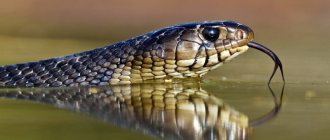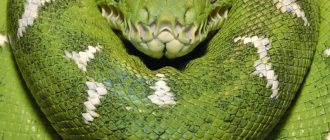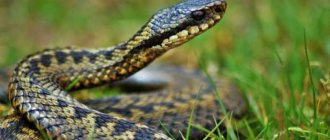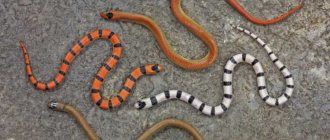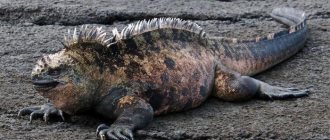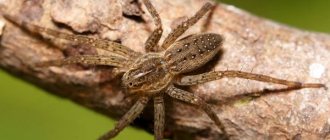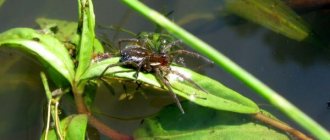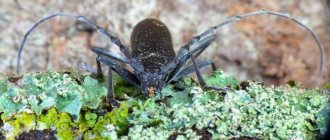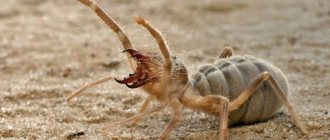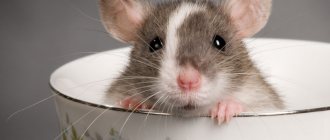- Wild animals
- >>
- Reptiles
We all know the common grass snake very well, but we have heard little about its closest aquatic relative. Usually, when people see it, they mistake this colubrid for a poisonous and dangerous reptile, from which the merman often suffers. Let's learn more about its life activity, habits, character and external features that distinguish this snake from its ordinary counterpart.
Origin of the species and description
Photo: Water snake
The water snake is a non-venomous snake belonging to the colubrid family and genus of real snakes. This creeping creature is often mistaken for a dangerous viper, which is why they sometimes behave aggressively with it. First of all, its color distinguishes it from an ordinary water snake, which is why it is mistaken for a poisonous snake.
Video: Water snake
The water snake does not have the characteristic yellow or orange spots on the back of its head, like its common relative; other tones predominate in its color:
- gray;
- brownish;
- greenish-olive.
Interesting fact: Among water snakes there are melanists; they are completely black.
The water snake is distinguished from the ordinary one by a pattern in the shape of squares; its body is covered with a cubic pattern. No wonder its Latin name “tessellata” means “covered with cubes” or “chessboard”. Thanks to this feature in color, the snake is popularly nicknamed the “chess viper.” Many people actually think that this is a type of viper.
The merman is not only the closest relative of the common one, but also its neighbor, because it often settles nearby, occupying neighboring territories with the same landscape and climate. The main condition for its successful and favorable life activity is the presence of a water source in its habitat, both flowing and with standing water.
Appearing in the recreation area of swimmers, such a person often causes panic and confusion, suffering in the process. All this fear and hostility towards the water snake is due to human ignorance; in fact, it is quite harmless and not at all poisonous.
Common Misconceptions
Serpentologists have long studied and described this species. However, many stubbornly continue to call the snake a chess viper, which is not even a relative of the dangerous poisonous predator. The stereotype is so widespread that even the name has stuck along with the scientific one.
It has a weak venom that it uses to kill some of its prey, like lizards, small mammals, frogs, other snakes and even bats, but poses no danger to humans or pets. Temperament: This species is recognized for its obedience because it rarely tries to bite when being manipulated, on the contrary, when it encounters a person it tries to quickly escape.
All these characteristics, in addition to their large eyes, can help us distinguish it from true corals. False corals in general are greatly haunted by the fear they generate when confused with true corals. Hunter - Mastigodryas boddarti. Habitat: diurnal why we can find it in a wide variety of environments such as grasses, shrubs and wooded areas.
Even those who are sure that the viper does not bite in water begin to panic when they encounter a chess amphibian. After all, it not only floats on the surface, but also dives perfectly. Many people think that this cunning species is capable of attacking even at depth. But they are right in many respects: vipers do not actually dive and do not attack in water.
Activity: Poses no danger other than frogs, rodents and lizards, the main components of your diet. Temperament: He is harmless and we should let him have his way. This snake is often found in the interior of Medellin, as in the University of Antioch, the Botanical Garden and the solemn hills.
It is of moderate size as it can reach up to 5 m in length and coloration varies depending on its life stage. Juveniles are dark brown with irregular gray or irregular checkerboard stripes; while in adults its dorsal coloration is light brown or even olive green, with a distinct longitudinal line extending from the back of the head.
Any living creature, in case of danger, and even when it only thinks that danger is close, tries to defend itself. Man is also driven by this instinct. That’s why many advise dealing with the reptile without waiting for an attack.
Is the chess snake poisonous or not? The question is simple only for those who are well acquainted with this animal. The majority prefers to simply deal with him. Many “checkerboard” snakes die at the hands of frightened tourists due to simple ignorance.
Habitat: It's a snake. Exercise: During the day you can find him sleeping, hidden in empty areas of trees, rolled in bromeliads, under logs or leaf litter. At night it is an active hunter, in addition to being very mobile, as it is able to stretch about half its body without support to search for its prey, which consists mainly of frogs and lizards and some reptile eggs.
Temperament: movement is slow, obedient and calm. It is safe for people and their pets. Habitat: Found in the lowlands and slopes of the Aburra Valley. Exercise: It feeds mainly on centipedes, but can also consume insects and spiders, so it sometimes ends up in the homes of people it attacks.
Appearance and features
Photo: Water snake
In addition to the fact that the merman is no longer endowed with bright orange spots on the back of its head, it also has other external features inherent in this particular species of colubrid. The length of the body of a water snake can reach one and a half meters, but individuals are usually found about 80 cm long. Females are slightly larger and longer than males. The length of the common snake is almost the same; it can grow only a few centimeters.
Compared to the common snake, the edge of the muzzle of the water snake is more pointed. As noted, it is often mistaken for a pit viper due to its color, skin pattern, and lack of orange spots. However, if you study the water snake in more detail, you can note some signs that distinguish it from a poisonous reptile:
- the viper's head has the shape of a triangle, while that of the grass snake is oblong and oval;
- The head shields of the grass snake are large, while those of the viper are much smaller;
- looking into the snake's eyes, you will notice that the viper's pupil is located vertically, while the snake's pupil is round;
- In terms of dimensions, the common viper is smaller than the snake; its length usually does not exceed 73 cm, and the longitude of the snake goes beyond a meter.
The scales covering the upper part of the reptile have a characteristic ribbing, with the ribs arranged longitudinally. We have figured out the color of the snake’s back, and its belly in males has a reddish tint, and in females it has a yellowish-orange tint. On the ventral side, the main background is diluted by dark spots located across the body of the snake.
Another feature of the water snake is a spot in the shape of the letter “V” located on the back of the head, its tip is directed forward. The color of the dinner young animals is almost identical to the color of mature individuals, only their belly has a whitish tint. Snake eyes have round pupils and yellowish irises with gray flecks.
Where does the water snake live?
Photo: Already in the water
The distribution area of the water snake is quite extensive. Compared to its ordinary dinner brother, this grass snake can be considered more heat-loving and southern. It settled throughout the southern part of Europe, occupied the south of Ukraine and Russia, choosing the territories of the Don, Kuban, Volga, and the coasts of the Azov and Black Seas.
If we outline the boundaries of the distribution of the common grass snake, the picture looks like this:
- in the west, the range is limited to the southwestern part of France (Rhine Valley);
- in the south, the border runs through the northern regions of the African continent, reaching Pakistan and the Persian Gulf;
- the eastern front of the grass snake's habitat passes through the territory of northwestern China;
- the northern border of the range extends along the Volga-Kama basin.
From the very name of the reptile it is clear that it cannot exist far from bodies of water; it necessarily needs water sources in its habitat. It is precisely in the water element that he spends the lion's share of his time. The water snake prefers to live in the coastal zone of a lake, river, pond, or sea. Snakes thrive in artificially created canals and reservoirs. Creeping creatures love either completely stagnant or sluggish water, but they also live in cold, stormy, mountain rivers. In the mountain ranges, the water snake can be found at an altitude of three kilometers.
Most often, snakes choose for permanent residence reservoirs with a gentle entrance to the water, the smooth slopes of which are covered with gravel, soil or sand. Snakes avoid steep, steep banks. Snakes also avoid heavily polluted water bodies, because they hunt and feed on small prey without crawling out of the water. The most favorite places where reptiles like to rest and relax are large, flat stones located along the banks, or tree branches bent directly above the water surface. Snakes are well oriented and move in the canopy of trees, so they often climb onto the branches of plants located near a pond.
How to behave when meeting
If you happen to camp in a place where water snakes live, do not forget that they are not dangerous. Try to explain to others what a “chess viper” actually is.
It is a very docile snake and for this reason it is one of the most common pet snakes. He is also preferred for his appearance as he has a very colorful livery. The grain snake is essentially characterized by a sparkling livery, like orange, with darker decorations that turn red. The belly, however, is clear with dark spots that form a checkerboard decoration. The head is small, the eyes are round.
It is a quiet snake that rarely attacks unless threatened, in which case it shakes its tail, emitting a hiss similar to that of a rattlesnake, and provides a foul-smelling liquid that deters all attackers. Habitat: The grain snake is a species that is adapted to live in a variety of natural habitats, although as the same name suggests, their ideal environment consists of fields cultivated with corn, wheat and maize. However, they can often be found even in different environments such as forests, prairies and extreme conditions even in semi-desert areas.
Photos of snakes taken on vacation will take their place in the album. But when taking pictures, try not to use flash, it scares many animals. Moreover, during the day, when the snake is resting calmly and the chance of meeting it is great enough, there is sufficient lighting so that all the beautiful spots are clearly visible in the picture.
You should not catch snakes in the water. They breathe with their lungs and, resisting, can choke. And in general, it’s better not to pick them up - the unpleasant protective smell is not so easy to wash off.
What does the water snake eat?
Photo: Water snake from the Red Book
It is not at all surprising that the dinner menu mainly consists of fish dishes. It hunts for its favorite snack, both in salt and fresh water.
The fish diet consists of:
- crucian carp;
- perch;
- roach;
- loaches;
- minnows;
- small carp;
- sometimes pike.
He devours small fish right in the water column, but he has to tinker with large ones, so he deals with them on the shore.
Interesting fact: In one successful hunt, he is able to swallow about four dozen small three-centimeter fish, but much larger fish (about 15 cm in length) are also found in his diet.
In addition to fish, the merman is not averse to snacking on frogs, tadpoles, toads, and newts. In the estuaries of the Azov region and Crimea, it eats gobies in large quantities, which is why the indigenous people nicknamed it the “goby catcher.” Water snakes prefer to hunt in two ways: they can hide and wait for prey in ambush, then attack it with lightning speed, or they can pursue potential prey, deftly maneuvering in the depths.
If the victim manages to escape during the attack, he will not catch up with him, he will find a new object for hunting. Usually the reptile clings to the very middle of the fish’s body, firmly grasps large prey in its jaws and swims with it to the shore, holding it above the surface of the water. Clinging to some coastal bush with its tail, it drags its heavy burden onto land.
The meal begins with swallowing a fish head. The size of the prey can be larger than the head, so the reptile swallows it with the help of movable joints of the lower jaw and bones located nearby. Looking at this spectacle, it seems that he himself is crawling onto his victim.
Interesting fact: It is reliably known that a young small viper was found in the stomach of one of the water snakes.
Snake food
Snakes' favorite foods include all kinds of amphibians, such as toads, tadpoles, and newts. Occasionally, their diet includes insects, small birds and mammals.
The most favorite food for snakes are frogs, which they are ready to hunt at any time of the day, which leads to the disappearance of the frog population in places where these reptiles are crowded.
Favorite prey of snakes are frogs
On the coast or in the middle of the water, it usually sneaks up on a frog, trying not to disturb its potential prey, then makes a sharp jerk and grabs the amphibian. On land, he can simply start chasing them, and getting away from a fast snake is not at all easy.
After the victim is grabbed, he begins to swallow it, and certainly from the very place where he actually caught it. Different species of snakes have their own preferences in food: some simply adore toads, others will never touch them. In captivity they can even eat raw meat.
Features of character and lifestyle
Photo: Water snake
Water snakes are diurnal snake predators, active during daylight hours. Crawling out of its lair at dawn, it spends a long time warming up in the rays of the morning sun. He spends a lot of time in the water, getting out of it only in the late afternoon, then takes refuge in his shelter until the morning. Snakes do not like intense heat, so during such hot hours they hide in the water surface or shady coastal bushes.
From the name of the reptile it is clear that snakes are excellent swimmers and excellent divers who are well oriented in the underwater world and can stay in the water column for a long time. Usually, each snake has its own plot of land, which it adheres to, moving along it within two hundred to four hundred meters.
Interesting fact: The vision of water snakes does not fail, it is very sharp and sensitive. Having noticed a biped even at a distance of ten meters, the reptile rushes to dive deeper and avoid an unwanted encounter.
Snakes enter winter torpor with the onset of the first frosts, which usually occur in October-November. Their mobility is lost already with the arrival of September, when it begins to get colder. Wintering can be solitary or collective. Dens in which snakes survive the harsh winter period are used by them for many years.
Interesting fact: Sometimes during a collective wintering in a shelter there are up to two hundred supper specimens. Water snakes often spend the winter in the same den with their ordinary counterparts.
Awakening from suspended animation occurs when the ambient air temperature warms up to 10 degrees plus; this time occurs at the end of March or beginning of April, it all depends on the region of permanent residence. Newly awakened snakes look sluggish and move little, gradually coming to their senses and gaining the dexterity lost over the winter.
The molting process in water snakes occurs several times every year. There is evidence that molting occurs monthly in the summer. If we talk about the character and disposition of this reptile, then we can say with confidence that the water snake is a peaceful creature and has not been observed in aggressive attacks on humans. He himself tries to be the first to retreat when he sees people, in order to remain safe and sound.
Who poses a danger to water snakes?
As mentioned above, in the modern world the most dangerous and most common enemy of these reptiles is man, whose expansive actions cause significant harm to waterfowl snakes. However, people are not the only enemies of these reptiles.
The most common natural enemies of water snakes are:
- predatory fish and birds;
- carrion birds;
- large carnivorous mammals;
- crocodiles;
- alligators.
And also larger snakes, sometimes even of the same species. It is worth noting that the number of water snakes in the wild is rapidly decreasing every year. It must be remembered that the ecosystem is very balanced in its original structure and, despite the constant destruction of each other by animals, their total number always remains approximately constant, and excessive human activity has led to an imbalance in this balance.
Therefore, be extremely careful and careful with various types of wild animals and take care of the environment.
Social structure and reproduction
Photo: Water snake
When snakes finally lose their winter torpor after hibernation, their wedding season begins. Then the water snakes gather in whole groups, in which pairs are formed, ready for mating. Reptiles become sexually mature when they reach three years of age. After a stormy mating season, females begin to prepare for laying eggs.
There can be from 4 to 20 of them in a clutch; the laying process is quite long and takes each expectant mother several hours in a row. The female's clutch is placed in loose and moist soil, under large boulders. Freshly laid eggs are transparent, so the silhouette of the embryo is visible through the shell.
The incubation period takes almost two months. Newly created snakes from birth have increased activity, independence and dexterity. They crawl quickly and look exactly the same as their parents, inferior only in size. The length of small snakes is from 16 to 19 cm. Almost immediately, the kids go on their first hunt for fish fry.
Interesting fact: Water snakes, like ordinary snakes, have collective clutches that can contain up to a thousand eggs.
Among aquatic colubrids, an autumn wedding marathon also occurs, when the reptiles begin mating again before hibernation begins. In this case, egg laying is postponed until next summer.
Due to their ignorance, many people believe that the water snake is the result of crossing a common snake and a viper, which is very wrong. This assumption is fundamentally incorrect, because... These two reptiles belong to completely different species and families and cannot interbreed with each other.
Species affiliation
So, we already know that a snake with a checkerboard pattern is a real snake. Scientists call it a merman, which once again reminds us of its way of life. This is a predatory non-poisonous animal that belongs to the colubrid family.
Exclusively predators, they have developed several hunting strategies: some species suffocate among shoots, others have poisonous fangs with which they strike. Moreover, snakes are not social animals and mostly spend their entire lives alone; The only exception is courtship and mating, which are carried out through actions that are primarily instinctive and non-communicative. The babies born are already completely independent and are abandoned by their mother immediately after shedding the eggs or giving birth.
During their growth, snakes completely change their skin. When this happens, new skin has already formed under the old one: the latter retracts like a snake sock, which helps to rub the earth and stones. But it would be good to emphasize "potentially" because these animals are very timid and sneaky, and unless they are directly chased, biting is practically a business.
Natural enemies of water snakes
Photo: Caspian water snake
For humans, the merman is completely safe, but the reptile itself faces many threats. Snakes can become victims of both predatory animals and birds. Inexperienced young animals are the most vulnerable. Muskrats, muskrats, weasels, common foxes, hedgehogs, snake eagles, gray herons, kites, and crows are not at all opposed to snacking on snakes. Often small stings become victims of seagulls and waterfowl (mallards).
Even such large fish as pike and catfish can easily eat a snake, especially a young one. In addition to fish, some snakes also happily eat snakes (sand snakes, big-eyed snakes and yellow-bellied snakes). The creeper has some defense tools that it uses when it suspects a threat. To scare away an ill-wisher, the snake emits a hiss and secretes a foul-smelling secretion using the gonads. This specific liquid substrate interrupts the appetite of many predators, saving the life of the dinner.
Interesting fact: The water snake is a real artist who pretends to be dead for self-defense; the ordinary snake has the same talent.
Although the merman is not at all poisonous, it often suffers due to human ignorance, because people unknowingly mistake it for a dangerous viper. Many colubrids die in such unequal battles with people, therefore, noticing the approaching two-legged enemy, they are in a hurry to retreat, hiding in the depths of the waters.
Precautionary measures
When going on a long hike, the route of which runs along the coast and along the steppe, you should think about the safety of the group. After all, once frightened, it will be difficult for anyone to distinguish an ordinary chess snake from a poisonous steppe viper.
It is worth saying that even poisonous amphibians are unlikely to think of having breakfast with someone from the tourist group. But if the most unpleasant thing happens and the snake still bites, you should immediately take action. At the site of the steppe viper bite, two obvious punctures from the poisonous teeth will appear, swelling and numbness will begin. Nausea, dizziness, and a feeling of intoxication may occur. In this case, the victim must be taken to the hospital. If this is not possible, it is necessary to cool the affected area, provide drinking regimen (up to 3 liters in small portions), and give an antihistamine. A tourniquet, drinking alcohol and burning the wound will aggravate the condition; there is no benefit from these methods. In the absence of an antidote, the condition is stabilized with the help of Prednisolone, but this drug cannot be used intuitively - medical supervision is necessary. The bite of the steppe viper is not considered fatal, but it is not worth the risk. For example, the victim may have a personal intolerance, and in addition, bacteria from the viper’s teeth enter the wound canal.
But you don’t have to worry about being bitten by a chess snake. The merman is simply not capable of this. It can only frighten an ignorant person. But anyone who knows that this snake is not actually dangerous is unlikely to waste time and energy on unreasonable panic.
Population and species status
Photo: Water snake
Although the distribution area of the water snake is very extensive, the reptile is exposed to various negative factors, so its population is declining. In our country there are no big problems regarding the number of water snakes; only in some areas it is included in the Red Books. In Europe, things are much worse; this species of colubrids is on the verge of complete extinction there.
This deplorable situation in European countries is due to the fact that they have a small territory, so the snakes have nowhere to settle; people have practically driven them out everywhere. Draining swamps, cutting down forests, and building highways have an extremely negative impact on the supper population, which is why it is disappearing from these regions.
In addition to all of the above problems, the deterioration of the ecological situation has a bad effect on the population size, because many reservoirs become heavily polluted and become unsuitable for a healthy life. Snakes are very susceptible to all kinds of noise from motor boats, ships, coastal campsites, etc. We should not forget that people themselves destroy water snakes because of their similarity to a poisonous viper.
On the territory of Russia as a whole, this species of snake is under an uncertain status, because There is no reliable information on the size of the dinner population. If we talk about the international conservation status of the water snake, it is worth noting that this species of reptile is protected by the Berne Convention.
Interesting Facts
- Tradition says that he saved Rome from the plague. After that, he became a symbol of medicine; he was called the Aesculapian snake.
- A city in western Ukraine, Uzhgorod, is named after the snake.
- The snake's official name is natrix, which means swimmer.
- They can lay eggs in chicken nests. Therefore, interesting surprises sometimes await chicken coop owners.
- Snakes can go without food for several months.
- If he crawled into the house, it means that the dinner king became the patron of the house. You cannot offend or drive out a snake. You need to feed her milk, and this will attract prosperity.
- In nature, two-headed individuals and albinos are found.
- In folklore, snakes are the guardians of treasures.
- Females sometimes arrange collective clutches. One day, scientists found such a “supper manger” in which 1200 eggs were stored.
- Previously, in villages, snakes were dipped into a container of milk. It was believed that after this it would not turn sour for a long time.
